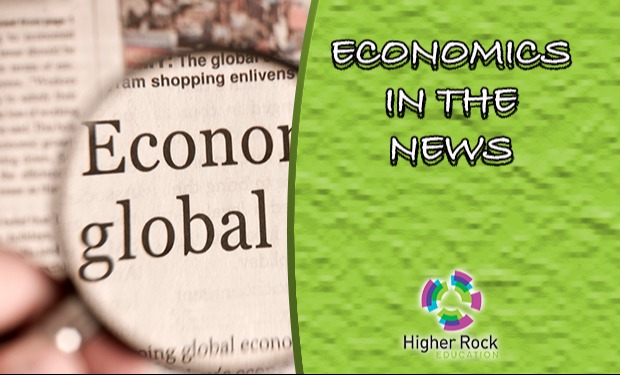
Economics in the News – March 24-30, 2025
Economics impacts our lives every day. Below are some of the top storylines from this past week related to economics.
o How will President Donald Trump’s tariffs impact car manufacturers? The impact of the tariffs largely depends on the specific manufacturers.
Tesla is less exposed than other manufacturers to tariffs due to producing the cars it sells in the United States in California and Texas. However, it is struggling with sales due to Elon Musk’s involvement in the Trump administration, leaving moderate and liberal car buyers to ditch Musk’s company. Meanwhile, General Motors produces 40 percent of the cars it sells in countries outside the United States with Mexico being the most prominent which could make it vulnerable to tariffs. Ford builds most of the cars it sells in the United States, but still relies on imports for major parts. The world’s largest automaker builds many of the cars it sells within the United States outside the country, which could present challenges for them and other Japanese automakers that Toyota works closely with such as Subaru and Mazda. Volkswagen will be among the most impacted auto manufacturer due to only having one factory in the United States, instead relying heavily on imports from Mexico and Germany. [The New York Times]
o Consumer confidence has fallen to its lowest level since January 2021, as Americans are increasingly concerned about their jobs and finances. Economists have warned of President Donald Trump’s tariff policies reigniting inflation.
Companies are also warning of signs that Americans are pulling back. Delta Airlines has cited lower demand for domestic travel for the first three months of the year. Clothing retailer Burlington cautioned investors that tariffs could impact the amount of money households spend on discretionary goods. [The New York Times]
o If you’ve shopped at Costco, you are likely familiar with the Kirkland Signature Brand – the company’s private label that accounts for $86 billion of Costco’s $254 billion of total revenue. Since it opened, Costco has operated under the premise of carrying a limited number of name band items but selling those products in high quantities. Costco went against industry standard when it debuted Kirkland Signature in 1995 of housing all of its products under the same brand name. Instead, most companies in that time had their private labels carry a different private label.
Kirkland has more than 350 products and with its $86 billion in sales is a larger brand than Proctor & Gamble and Kraft Heinz. Costco has also used the Kirkland Signature brand as a leverage tool against other name brand items, allowing Costco the opportunity to control the markup percentage of the products in its stores. Kirkland Signature has also allowed Costco the opportunity to negotiate better deals with brands for limited shelving space in its stores. [The Wall Street Journal]
o If tax revenue falls short of expectations, the United States federal government could hit its borrowing limit as soon as May. If debt remains on its current course, the federal government could reach its borrowing limit by September. There is growing concern among tax officials at the IRS of a sharp drop in revenue collection by as much as 10 percent. That would lead to a shortfall of $500 billion in revenue and could lead the government to borrow more money to pay its bills.
The Treasury Department has been taking “extraordinary measures” to delay certain payments and stretch the government’s current cash since January. Lawmakers are seeking to pass a package to extend expiring tax cuts and authorize new spending on immigration enforcement and national security before Memorial Day. That is scheduled to include a $4 trillion increase to the debt limit. [The Washington Post]
o Investors remain uneasy about the direction of President Donald Trump’s tariff policies. The major indexes on Wall Street remain at their lowest levels since September 2024. Since that time, the Dow is down 1.7 percent since the start of the New Year, while the S&P 500 is down 5.1 percent. Meanwhile, the tech-heavy Nasdaq has declined more than 10 percent.
Analysts continue to lower their expectations, citing slower economic growth and trade policy uncertainty. In addition, analysts are concerned that with inflation at its current level, the Federal Reserve could keep interest rates higher for longer. [The Washington Post]